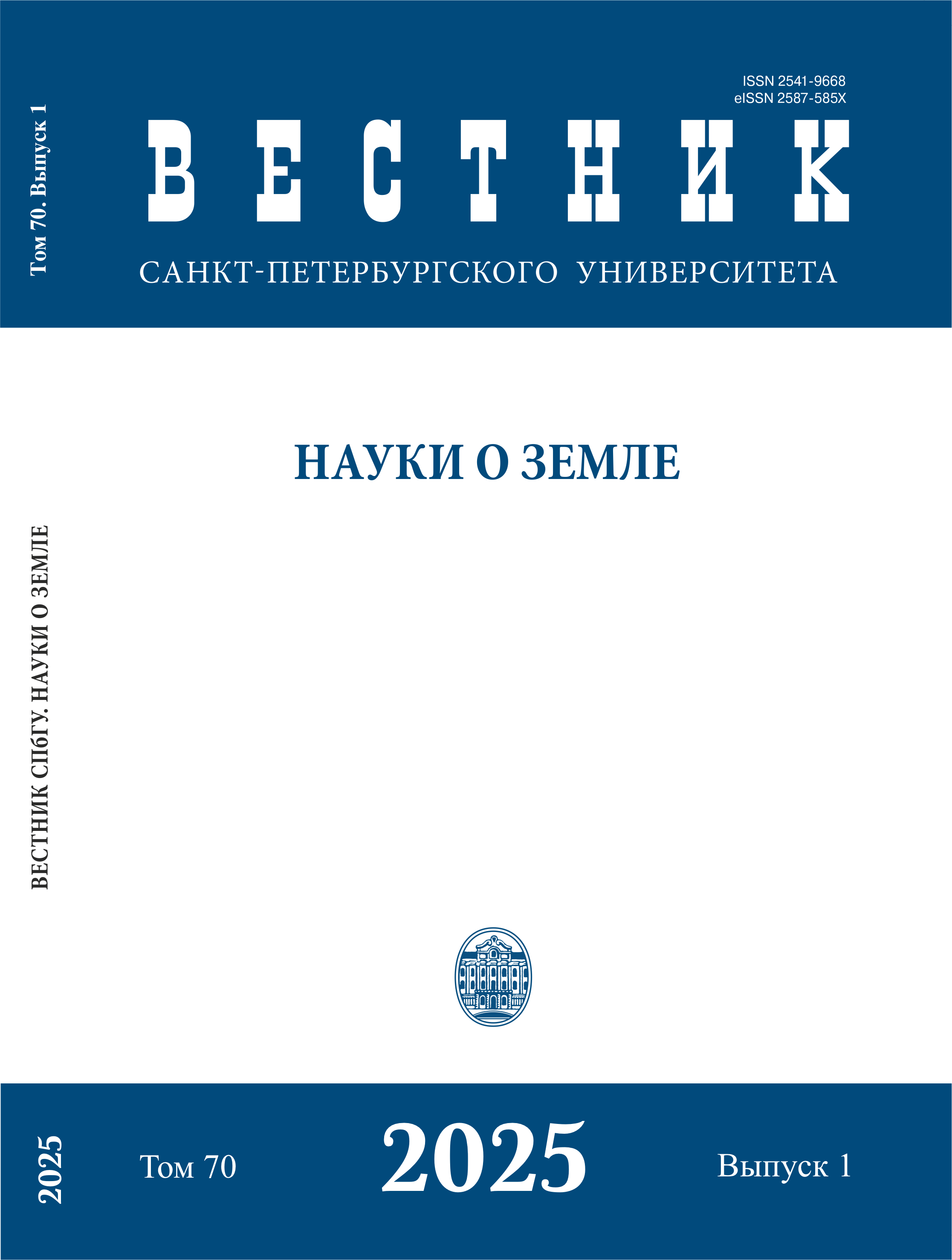Paleoseismodeformations in interglacial sediments of the White Sea coast
DOI:
https://doi.org/10.21638/spbu07.2025.110Abstract
Paleoseismicity studies of Fennoscandia date back about 200 years. Data on seismically active structures, types, and distribution of paleoseismodeformations have been systematized since the end of the last century, while the main role in generating strong earthquakes is assigned to glacioisostatic postglacial movements provoking differentiated displacements. Accordingly, the activation time is traditionally limited to the period of deglaciation. Recently, the quantity and quality of information on paleoseismodeformations has increased significantly due to the development of accurate methods for assessing landforms, structure and composition of sediments and the age of their formation and transformation. This led to the acquisition of data on the development of paleoseismodeformations in a much wider time frame. On the one hand, younger traces of paleoearthquakes have been found than the last Late Glacial Period, formed during the entire Holocene. On the other hand, data on earlier paleoearthquakes have been obtained: a) formed in subglacial conditions in the early stages of deglaciation; b) in front of the advancing glacier; c) in the interglacial. In this regard, it is of considerable interest to assess the deformations of interglacial deposits from the point of view of the possible influence of ancient earthquakes. It seems very relevant to obtain and systematize data, including for well-known and well-stratigraphically characterized sections of the White Sea region. The article presents data on paleoseismogenic deformations in the sediments of the Kola and Arkhangelsk coasts of the White Sea – the Tersk, Kandalaksha, Winter and Abramovsky coasts. Deformations have been studied in 29 sections of interglacial Late Pleistocene basin sediments and include ruptures of various types, folds, postsedimentation tilt and numerous forms of liquefaction – clastic dikes, structures of gravitational immersion (load cast) and upward penetration (water escape), homogenization and fragmentation of layered strata, deformation horizons with intense mixing (convolutions). In most cases, seismogenic textures of various types manifest themselves together, forming paragenetic complexes. Traces of several deformation episodes corresponding to seismic events were found in several sections. In some cases, their number reaches the first tens (up to a maximum of 16 seismite horizons in the section with an apparent thickness of 30-35 m), which, in comparison with the interval of accumulation of the thickness, determines the frequency of paleozoic earthquakes for certain areas of the eastern White Sea in the Late Pleistocene 500-1000 years. The paragenetic complexes and time relations of deformations studied in several sections of the Tersk coast indicate a consistent change in compression-stretching conditions characteristic of the passage of a seismic wave, and the spatial and kinematic parameters of deformations - orientation, displacement direction – indicate a genetic relationship between deformations and tectonic structure.
Keywords:
paleoseismodeformations, paleo earthquakes, ruptures, folds, liquefaction, Terskiy coast, Zimniy coast, Kola Peninsula, Late Pleistocene, Holocene
Downloads
Downloads
Published
How to Cite
Issue
Section
License
Articles of "Vestnik of Saint Petersburg University. Earth Sciences" are open access distributed under the terms of the License Agreement with Saint Petersburg State University, which permits to the authors unrestricted distribution and self-archiving free of charge.






